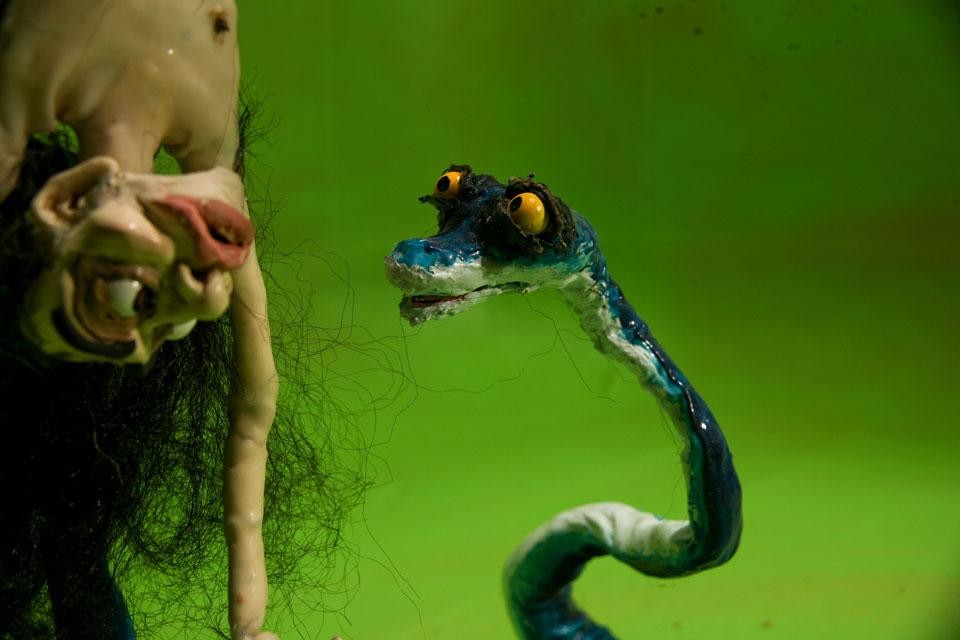
I remember very clearly the time I watched Nathalie Djurberg’s animation film, Snakes Knows it’s Yoga, with music, of course, by her constant collaborator Hans Berg. It was Autumn, and I was wearing a heavy sheepskin coat in Stockholm, visiting the Modern Museet’s Moderna Exhibition in 2010, the same year the work (which comprises not only the six-minute film of the same name, and another film, Untitled, but an installation of a collection of sculptural clay objects) was made. It was the year after Djurberg had been awarded the Silver Lion at Venice.
While Djurberg is known for her dark twist on fairytale aesthetics (see the creepy creature who graces the cover of the brand new Elephant magazine) Snakes Know It’s Yoga digs deeper into the contemporary psyche with a warped sense of eroticism. In the first film, a nude young woman cavorts with a frog: as in Shamanic tradition, she must lick its poison to embark on a psychedelic trip and enter the world of spirits beyond. In the second film, we meet a man and a snake, intertwined in a violent, ultimately fatal battle. There is an allegory in these animal tales, as in fairytales, that alludes to bigger themes in these two strange, spiritual claymations: the frog is traditionally a symbol of rebirth and regeneration, while the snake signifies fertility and healing.
Are these figures the alter-egos of the artists? Eve and Adam on acid? Or personifications of Iyengar’s theories? However you view it, the work’s colourful, crazed search for spiritual serenity confronts the idea that pain is necessary for progress. As Maharishi Mahesh Yogi once proclaimed, “the important thing is this: to be able, at any moment, to sacrifice what we are for what we could become.”




